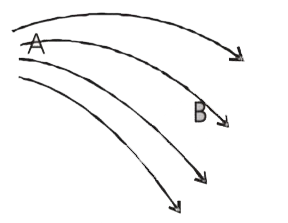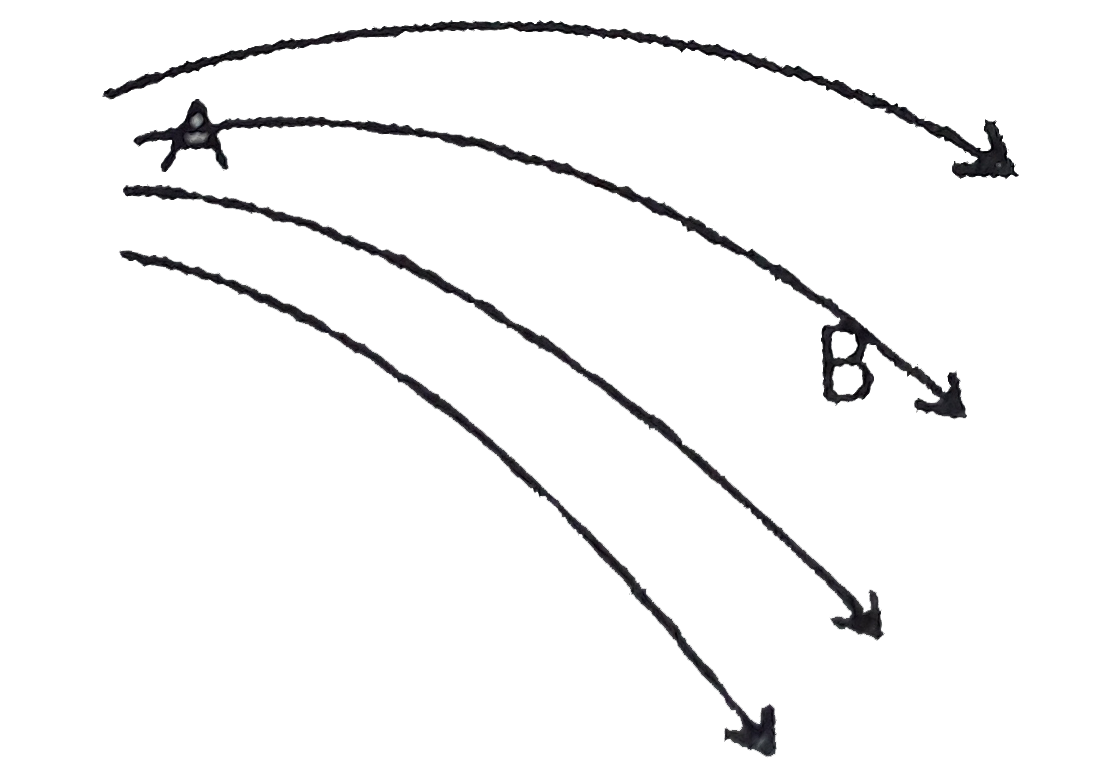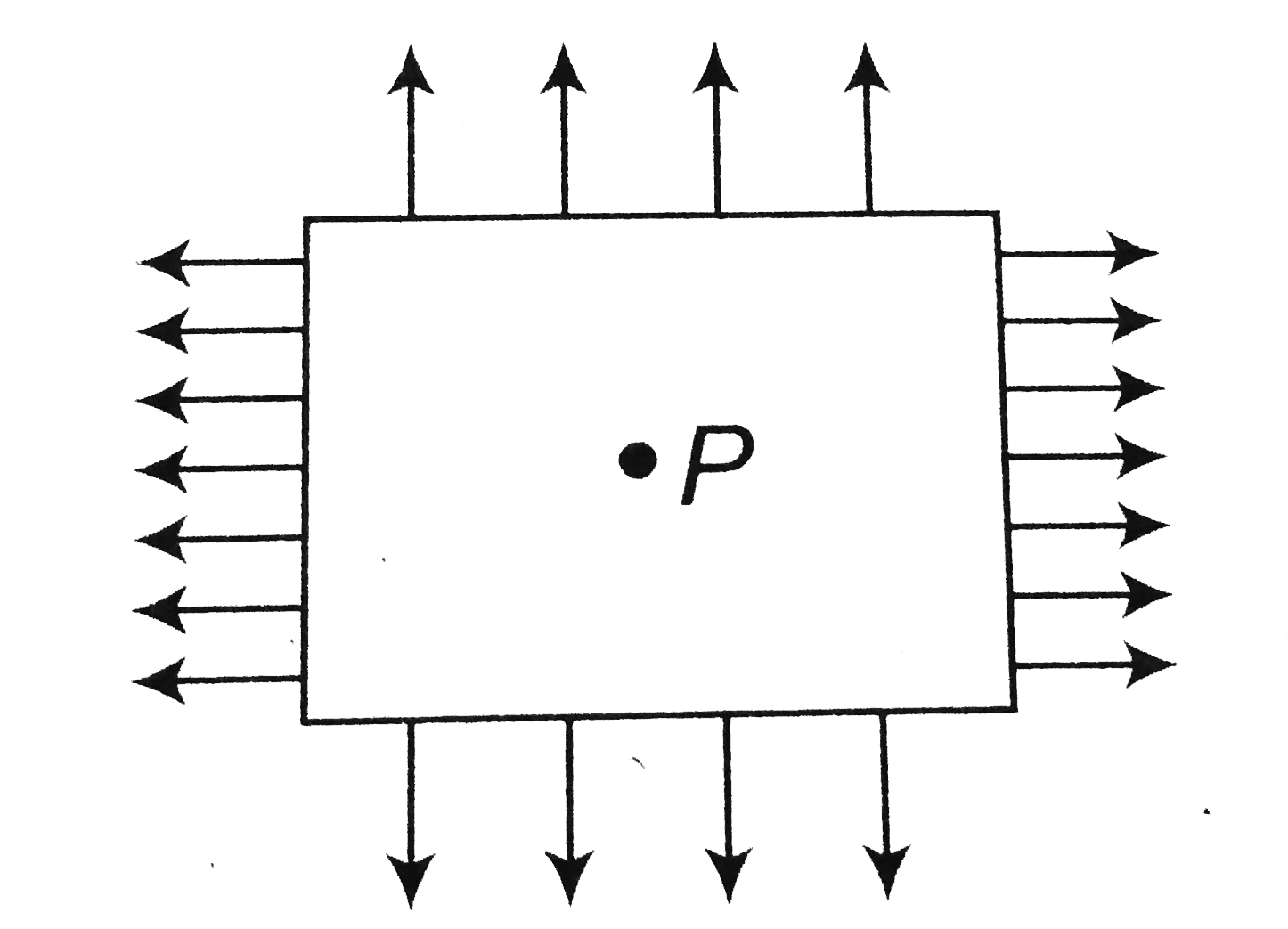Choose the correct statements :-
(a) The density of electric lines of force at a point is independent of the magnitude of electric intensity vector E at that point
(b) The density of electric lines of force at a point is proportional to the magnitude of electric intensity vector E at that point
(c ) Actually, the electric field lines do not exist. This is just a graphical description of the electric field
(d) Actually, the electric field lines exist
b, c
c, d
b, d
a, d
The correct Answer is:B
To solve the question, let's analyze each statement one by one:
Step 1: Analyze Statement (a)
Statement (a): The density of electric lines of force at a point is independent of the magnitude of electric intensity vector E at that point.
- Explanation: The density of electric field lines is directly related to the strength of the electric field. If the electric field is strong, the lines are closer together, indicating a higher density of lines. Therefore, this statement is incorrect.
Step 2: Analyze Statement (b)
Statement (b): The density of electric lines of force at a point is proportional to the magnitude of electric intensity vector E at that point.
- Explanation: As mentioned earlier, the density of electric field lines is indeed proportional to the magnitude of the electric field intensity. The closer the lines are, the stronger the electric field. Hence, this statement is correct.
Step 3: Analyze Statement (c)
Statement (c): Actually, the electric field lines do not exist. This is just a graphical description of the electric field.
- Explanation: Electric field lines are a conceptual tool used to represent the electric field visually. They do not physically exist in space; they are a way to illustrate the direction and strength of the field. Therefore, this statement is correct.
Step 4: Analyze Statement (d)
Statement (d): Actually, the electric field lines exist.
- Explanation: This statement contradicts the previous analysis. Electric field lines are not physical entities; they are a representation of the electric field. Thus, this statement is incorrect.
Final Conclusion:
- The correct statements are (b) and (c).
Statement (a): The density of electric lines of force at a point is independent of the magnitude of electric intensity vector E at that point.
Statement (b): The density of electric lines of force at a point is proportional to the magnitude of electric intensity vector E at that point.
Statement (c): Actually, the electric field lines do not exist. This is just a graphical description of the electric field.
Statement (d): Actually, the electric field lines exist.
- The correct statements are (b) and (c).
Topper's Solved these Questions
- ELECTROSTATICSBOOK - MOTIONCHAPTER - ELECTROSTATICSEXERCISE - Exercise -3 Section (A)
41 Videos
- ELECTROSTATICSBOOK - MOTIONCHAPTER - ELECTROSTATICSEXERCISE - Exercise -3 Section (B) Previous Year Problems | JEE Main
30 Videos
- ELECTROSTATICSBOOK - MOTIONCHAPTER - ELECTROSTATICSEXERCISE - Exercise -1 (Objective Problems | NEET)
105 Videos
- ELECTRONICS - SEMI CONDUCTORBOOK - MOTIONCHAPTER - ELECTRONICS - SEMI CONDUCTOREXERCISE - EXERCISE - 3
29 Videos
- ELECTROSTATICS - I BOOK - MOTIONCHAPTER - ELECTROSTATICS - I EXERCISE - EXERCISE - 4 (Level -II) PREVIOUS YEAR - JEE ADVANCED
13 Videos
Similar Questions
Knowledge Check
Electric lines of force about negative point charge are
Acircular ,anticlockwiseBcircular ,clockwiseCradial ,inwardDradial , outwardSome electric lines of force are shown in figure, for point A and B
 AEA>EBBEB>EACVA>VBDVB>BA
AEA>EBBEB>EACVA>VBDVB>BAthe property of the electric line of force (a) tangent to the line of force at any point is parllel to the parallel to the of force at any point
(b) No two lines of force at any pointAboth a & bBonly aConly bDa or b
Some electric lines of force are shown in figure. For points a and B

View SolutionElectric field intensity at a point is inversely proportional to cube of its distance due to
View SolutionIf electric field is uniform, then the electric lines of forces are :
View SolutionIn the diagram shown electric field intensity will be zero at a point.

View SolutionElectric lines of force are as shown in the figure. Then potential at point P

View Solution
